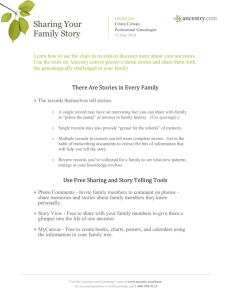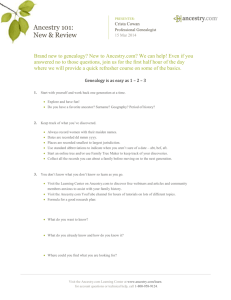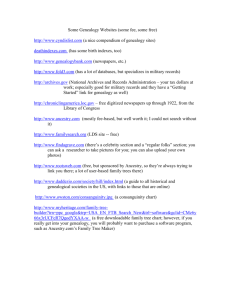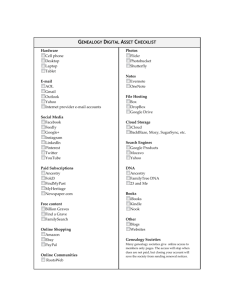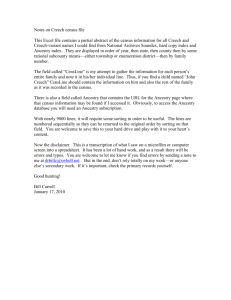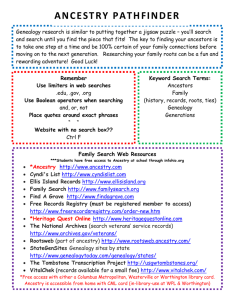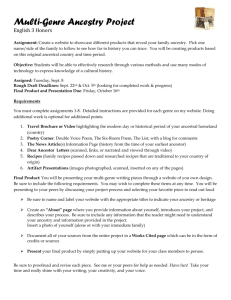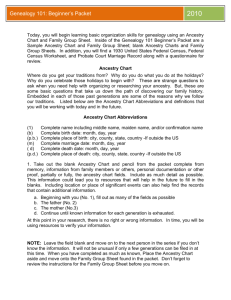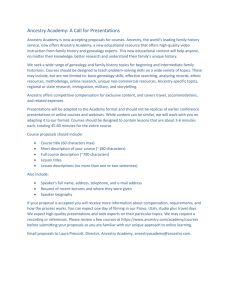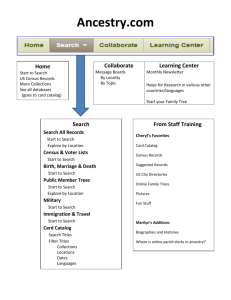Ancestry (Library Edition) (Only Available within the Library
advertisement
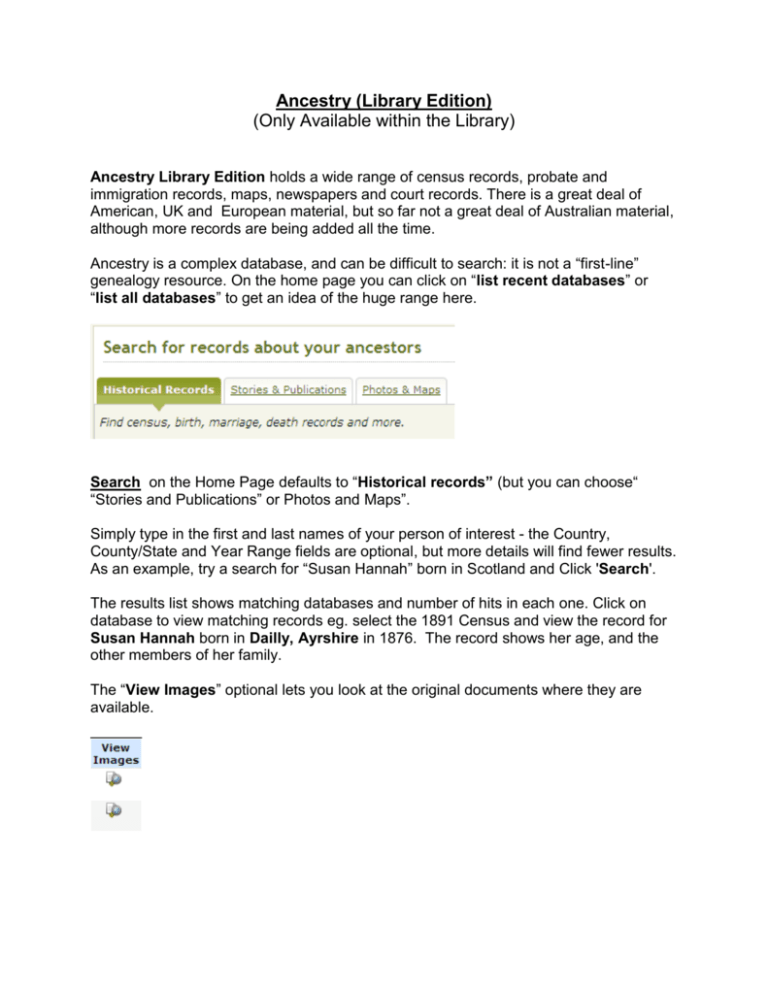
Ancestry (Library Edition) (Only Available within the Library) Ancestry Library Edition holds a wide range of census records, probate and immigration records, maps, newspapers and court records. There is a great deal of American, UK and European material, but so far not a great deal of Australian material, although more records are being added all the time. Ancestry is a complex database, and can be difficult to search: it is not a “first-line” genealogy resource. On the home page you can click on “list recent databases” or “list all databases” to get an idea of the huge range here. Search on the Home Page defaults to “Historical records” (but you can choose“ “Stories and Publications” or Photos and Maps”. Simply type in the first and last names of your person of interest - the Country, County/State and Year Range fields are optional, but more details will find fewer results. As an example, try a search for “Susan Hannah” born in Scotland and Click 'Search'. The results list shows matching databases and number of hits in each one. Click on database to view matching records eg. select the 1891 Census and view the record for Susan Hannah born in Dailly, Ayrshire in 1876. The record shows her age, and the other members of her family. The “View Images” optional lets you look at the original documents where they are available. The “Browse by location” option allows you to see what information is available on particular countries or counties etc. – eg. Select “Europe” or Australia and you can click on each country and find a list of the individual databases from there. The “Search”page also brings up a list of resources by category – Census, military, directories, stories and publications etc. Click on “Slave Narratives” and search for “runaway slaves” and look at some of the stories. Advanced searching The following types of searches are available in the Advanced section: Advanced First Name, Last Name, Country, County/State, Year Range, Spelling, Keywords, Record Type and Name proximity. Geographical location Under ‘Browse an entire collection’, use the maps to select Country and County/State of interest to view databases covering that location. Record type Under ‘More Records', select an individual database a group databases to search. 2009 Training Forum Notes The presentation was by Clare Bristow from Ancestry with a focus on Australian content. Ancestry.Library ed. is accessible through institutions and libraries whereas the Ancestry.com is a subscription database which allows end-users to upload information, there is more advertising; these are the main differences between the two databases. There are over 4 billion names in over 4000 collections which do have a bias to U.S. Genealogy but more Australian content is being added; there are 23 collections relevant to Australia. Updates to the database are on a regular basis, sometimes daily. Family history is a growing recreation for many of our borrowers. Eastern Regional Library recently costed their databases and the result was that Proquest cost $1-2 whereas the Ancestry cost was 60 cents. The HELP button is useful for FAQ; there are 693 answers available from Finding Polish ancestors, 10 Tough Ancestors, Wild cards and how they are used and the 1890 Census Images Online and lots more. Ancestry has historical information on the Holocaust, eyewitness accounts of world events and Abraham Lincoln’s correspondence. The database is not just a resource for genealogy and family history, but a worthwhile database to use within an historical context. Ancestry is used in conjunction with other genealogy resources. Searching tips – Exact search is a precise search when you have the exact information. Soundex is used when not use of spelling especially European names that have variations of the name, a search for Richard Ordenski there will be several spelling variations for this search. Wildcards/Truncation when not sure of spelling use an asterix proceeded with a minimum of three letters or uses a question mark for a letter for surnames Smith/Smyth, Johnstone/Johnson, White/Whyte. Some immigration records show the name and photo of the ship. Go to Immigration links, select Passenger Lists and a search for Edward Garvey on the New York Passengers List 1820-1957 and the entries will show whether there is a photograph included. The Australia, List of Convicts with Particular 1788 – 1842 gives quite detailed information about convictions; a search for a John Reader tells us that he was convicted of forgery, date and place of crime, length of sentence and any previous convictions. Message Board in the Library edition does not have a lot of information, you need to know where to go or have lots of information to share. The Message Board can only be used through the Ancestry Library com. edition to exchange information. It allows you to view messages and to search for general information about genealogy and family history. The Ancestry World Tree is useful for searching family trees, with links to census records view the tree and use the email address to contact the person. Other records include the U.S. Panoramic Pictures which show the development of a city, WW11 United Newsreels 1942-1946 showing events as they happened. Ancestry is a huge database and not only for family history but lots of historical information.
